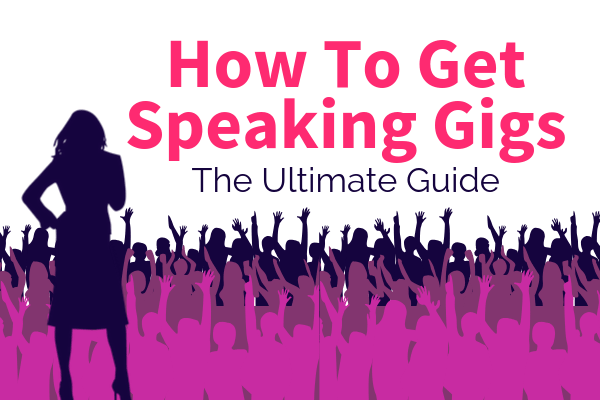In the last few months here at SpeakerFlow, my teammates and I have met with dozens of speakers. These intro calls have led us to some truly remarkable conversations, but they’ve also revealed some common problems among speakers. Some need new websites. Some need to get more organized. Others need full audits of their processes, as they’re not even sure where to start. But, regardless of the size of the speaking business, one struggle has remained the same: finding speaking gigs.
Depending on your experience, this may be more or less of a worry for you than for other speakers. If you’ve been speaking consistently for 15 years, you’re probably represented by a speaking bureau or two. You also probably have a polished website and a consistent process for contacting event planners. On the other hand, if you’re new to the speaking industry, you could be starting completely from scratch.
Regardless of where you’re coming from, ensuring a consistent stream of speaking engagements is critical for every speaking business. That’s why, in this ultimate guide to finding speaking gigs, we’re going to break down our best tips and tricks for finding gigs, no matter where you are in the process of growing your speaking business. Below is a quick outline of the many topics we are going to cover:
Preparing to Book Speaking Gigs
Before you pick up the phone or draft an email, there’s one important step that cannot be skipped: preparation. Preparing your materials and your message is of the utmost importance, especially if you plan to conduct your sales virtually. This prep work allows you not only to appear skilled and accomplished as a speaker. It also demonstrates to event planners how easy the entire booking process will be for them. It may sound rudimentary, the fact remains that more people will hire you if you have your sh*t together. Plain and simple.
Types of Speaking Gigs
So, what exactly do you need to prepare? First, let’s talk about the types of speaking gigs for which you would be booked. There are four types of speeches total: informative, instructional, ceremonial, and persuasive.
- Informative speeches are intended to present an idea or topic. They should focus on raising awareness rather than presenting an argument.
- Instructional speeches are for teaching or describing a process (think lectures).
- Ceremonial speeches can be seen at important events and include commencement speeches or the best man’s toast at a wedding. These are, for the most part, much less frequent than informative, instructional, or persuasive speeches.
- Last but not least, persuasive speeches are intended to persuade. Surprising, right?
Depending on the speech you are giving, you may need to have different materials prepared to demonstrate your skills. For example, if you are presenting an instructional speech, you should have visual aids as well as at least one video of a past instructional speech, to show your capabilities. However, for a ceremonial speech, you are much less likely to need visual aids prepared but equally likely to need your credentials outlined.
Sales Materials to Prepare
That said, there are five pieces of your sales process that are absolutely critical, regardless of the type of speech. From your pitch to an event planner to the equipment you need, the more you have prepared, the better your chances of getting booked in the first place.
Speaker Website
The first piece of the puzzle for selling your speaking services is a fairly obvious one: your speaker website. Now more than ever, your digital presence can make or break your first impression, when you’re considered for speaking gigs. Because of that, it’s important that your website showcases your credentials, your speaking skills, and how to contact you.
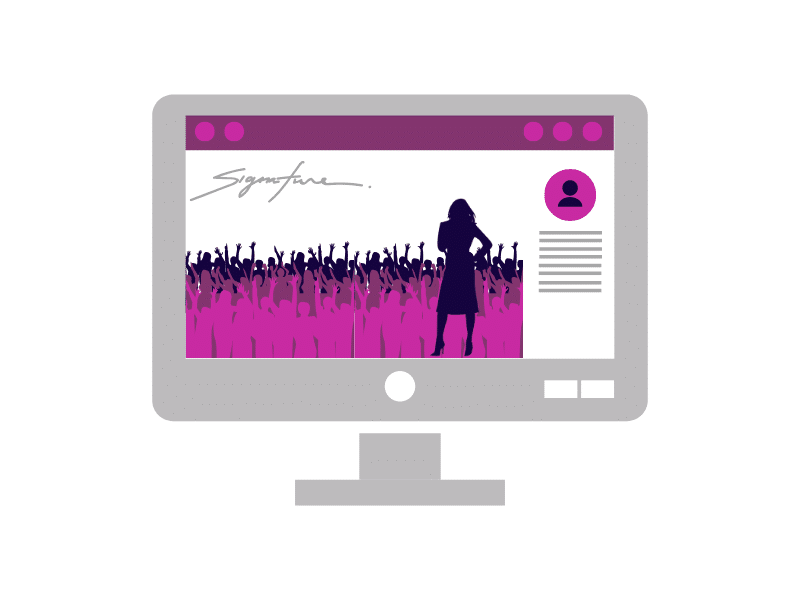
Your website should also meet a few requirements, from a marketing standpoint, if it is up-to-date. These include optimization for speed, a simple and clear navigation bar, and simple animations (just to keep things engaging). Perhaps most importantly, your brand should be consistent throughout the various pages on your website. Everything from wording on the homepage to your brand colors is representative of your message, directly or indirectly. As a result, mindfulness for these parts of your website, while tedious, is guaranteed to pay off.
Not sure whether your site is up to par? Check out a few of our favorites! Sites like those for Jacob Green and Katrina Cravy are perfect examples of these principles. In addition to a modern appearance, both also define their capabilities and skills as speakers clearly and concisely. This means that decision-makers can visit their site and see their worth in seconds.
All in all, if you’re not sure if your website needs a little TLC, feel free to contact us, too! We’re happy to break down a plan to bring your speaker website to the next level, free of charge. 👍
Social Media Channels
Next on your list of speaking materials to prepare is your social media. The three most common social media platforms used by speakers are Facebook, Twitter, and Instagram. First and foremost, these sites are demonstrations of your message and your engagement. After all, what shows your ability to engage people more than a long list of people that follow you online long after the gig ends?
If you don’t already have business Facebook, Twitter, and Instagram accounts, now is the time to create them. By engaging with people on social media you connect with past audience members and continue to share your message. Additionally, from a sales standpoint, you demonstrate that your speech was engaging enough to captivate audiences even after it ended. In other words, you show event planners how amazing you are and that they should hire you again (or hire you in the first place).

To get started, although it may seem daunting, there are TONS of great guides out there. New to Facebook? Check out HubSpot’s “How to Use Facebook: A Beginner’s Guide”. Not sure how to start tweeting? Hootsuite has you covered with “How the Twitter Algorithm Works in 2019 and How to Make it Work for You”. Basic articles like these or more in depth guides, like Later’s “How to Run Your Own Instagram Audit: 8 Steps to Building a Better Profile,” are easy ways to dip your toes in the water of the social ocean.
At this point, you might be thinking, “Social media sounds great, but I don’t have time to manage three or four social accounts,” and you’re 100% right. To solve the time-crunch conundrum (we all know it too well), enter social schedulers. I’ve actually mentioned a few of these already, such as Hootsuite and Later, but there are plenty of other options out there to help you automate posts to your social channels. Our personal favorite at SpeakerFlow is Buffer. Not only is it affordable and easy to use. It’s also proven to shave hours off of your daily workflow.
LinkedIn Profile
Now, there was one social media platform that we didn’t mention, and don’t worry. We didn’t forget LinkedIn. Recently, LinkedIn has rapidly been growing into a place to connect with other speakers and prospective clients. This is true for a number of reasons. First, LinkedIn is first and foremost a professional community so it is more easy to narrow people down by their profession (such as event planners). Second, it’s also easy for others to find you, as your LinkedIn profile can function as a digital resume. Finally, the publishing platform on LinkedIn is only getting bigger. As you’re working to grow your online presence, each of these features are key things to keep in mind.

Ready to up your LinkedIn game? Check out HubSpot’s “29 LinkedIn Tips for Professional Networking, Business & Marketing” or LinkedIn’s guide to getting started on their publishing platform. It only takes 15-20 minutes to take your profile from, “I’m a professional speaker” to “I’m a professional speaker, and you’d be a fool not to hire me.”
Pro Tip: Thanks to one of our co-founders, Austin, our resources page also has a pretty stellar LinkedIn guide. Click here to take a closer look! 👍
Digital Collateral
Moving on from social media, the next set of things to prepare probably comes as no surprise. These odds and ends make up the digital collateral collection that you provide to event planners once they book you. As with the other preparation pieces mentioned, having these materials perfected prior to selling shows your organization and the ease with which people can work with you. Below are the top five items we recommend preparing:
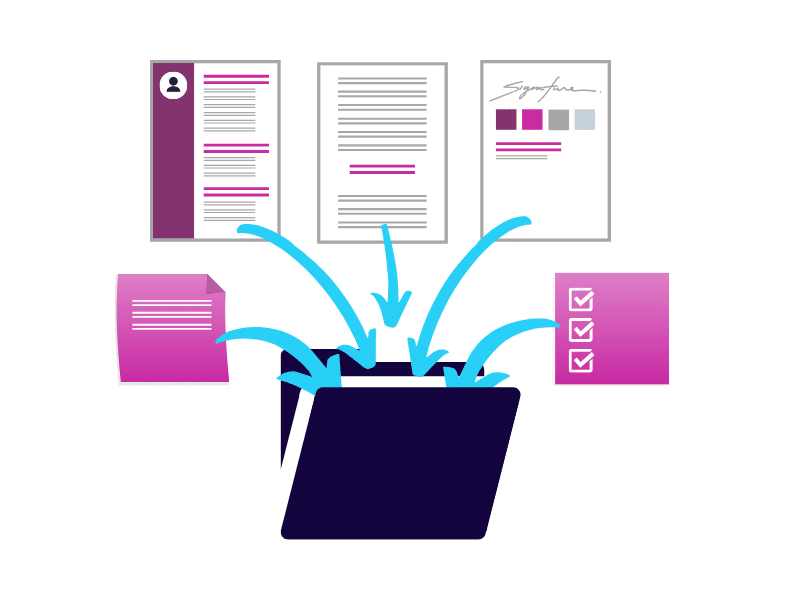
- Speaker One-Sheet
- Branding Kit (including your logo and brand colors)
- Headshots
- Biography (a long and a short version)
- Audio/Sound Requirements
Earlier, I mentioned speaker Jacob Green’s site as an example of what an ideal site should look like. However, it’s also a perfect example of these items. Specifically, his “For Event Planners” page is exemplary, as it outlines each of the bullets above among other details. In creating this summary for event planners, Jacob makes it easy for them to see his preparedness, consider his requirements, and make a decision in a matter of minutes. That’s your goal, when you begin reaching out to event planners, too. Show them your worth with as little time and energy as possible, on your end and theirs. That way, they can get back to organizing the event and you can get back to speaking.
Speaking Fee
Finally, the last and perhaps the most important thing you should prepare is your speaking fee. No one loves having the “money conversation,” but, by outlining your highest and lowest fees ahead of time, you better prepare yourself for it. Then, when it begins, you don’t fall into the tiny-budget trap. This happens when an event planner, after hearing your fee, tells you, “Well, our budget is only half of that”. Then, you say, “Okay, that would be fine”.
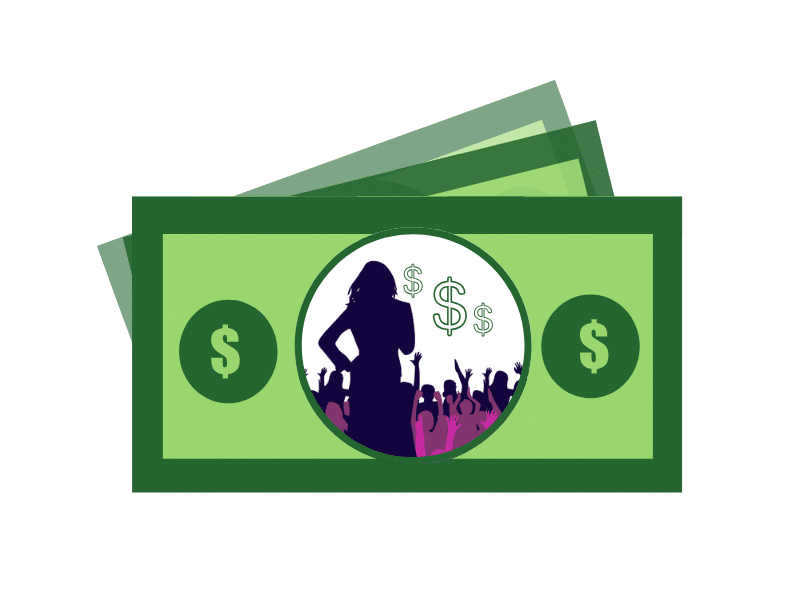
Absolutely not! Prepare your fee ahead of time along with a list of past clients (who would testify that you are worth that fee). Then, stand your ground when the sales begin. Be sure to also know where you stand on expenses. If an organization’s refusal to cover travel costs is a deal-breaker, make sure you know your bottom line beforehand, so you aren’t caught off guard.
Besides having difficulty selling, most professional speakers also under-sell themselves. Namely, they don’t know how much to charge for speaking gigs and so ask on the monetarily low side. So, before we go any further, you are likely worth more than you are charging, so plan some new prices! After all, it never hurts to ask.
The Basics of How to Book Your Own Speaking Gigs
Now that you have your website, social accounts, and back-end materials prepared, let’s move on to the main event: how to book speaking gigs. In this section, we’ll take a quick look at the basics of speaker sales and how to avoid the most common mistakes. Because we’re technology lovers here at SpeakerFlow, we’ll also cover the top tech to bring into your sales process. From CRMs to document management, there are a host of tools we’ve used to maximize our sales process. Plus, after this, you’ll be able to do the same!
Speaker Sales Collateral
If you’ve never sold before, it can seem intimidating to pick up the phone or send emails that focus solely on you. That said, rest assured that if we can do it, you can do it. To get started, sales as a professional speaker demands three things: preparation of your materials beforehand, knowledge of the event in question, and a thick skin in the face of rejection. The first of those things, preparation, includes not only the pre-sales materials we went over already. You should also have a process for handling leads, whether they are inbound or outbound, and standard templates for outreach to event planners.
The Basic Sales Process
Let’s take a look at an example. The following speaker – let’s call him Michael from Scranton – speaks about sexual harassment and time management in the workplace. Before selling, Michael makes sure that his website is updated and his digital collateral is prepared. He also writes an email template for event planners, in case they don’t answer his call. This template includes links to his website and LinkedIn profile, and a brief explanation of why he would be a valuable speaker at their event. He also drafts a pitch letter to the event planner, in case he is unable to reach them by email or phone.
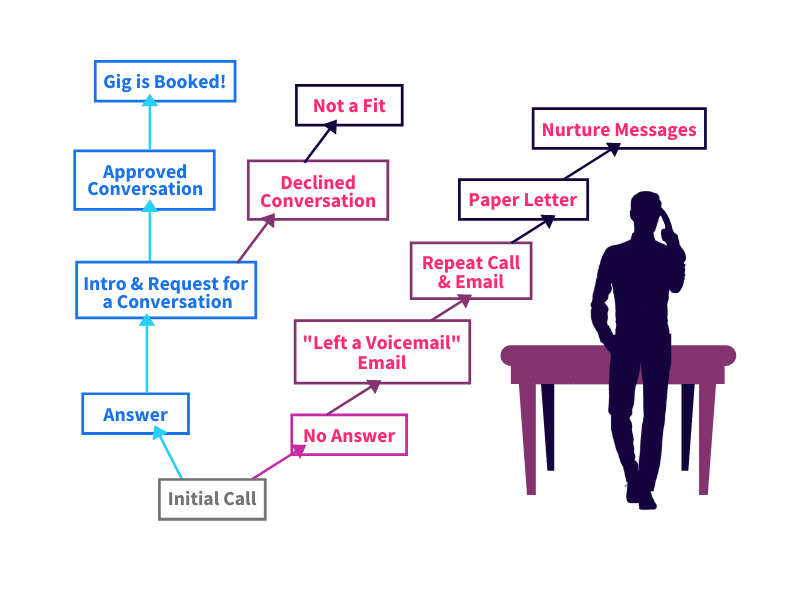
Finally, he researches the company that is hosting the event so that he knows the name of the event planner and the background on where and why the company is hosting the event in the first place. All in all, the process looks something like the image on the right.
Although Michael isn’t real, this process is a basic outline of how most speakers can start selling with little or no experience. The key is to contact the event planner in multiple ways until he or she gives you a “Let’s talk more” or “I’m not interested”. This is where the last part of selling comes in: having a thick skin. If an event planner isn’t answering your calls, emails, or letters, send another one. If they reject you for this year’s speaking gig, ask about the gig for next year. It may be a little easier said than done, but don’t get discouraged by a few “No”s or ignored emails. Booking speaking gigs, like any type of sales, is a numbers game, so the more event planners you reach and the more selling practice you get, the more your success rate will grow.
Technology for Booking Your Own Speaking Gigs
That said, besides the email templates and processes you can use to book more gigs, don’t forget about technology. From organizing your incoming leads to setting reminders to follow up, using the right technology can mean less work in the long run. Below are just a few of the tools that we recommend as well as how you, as a rookie or expert speaker, can use them.
Customer Relationship Management (CRMs)
You’ve probably heard of a customer relationship manager, or CRM, whether it was in the context of getting speaking gigs or not. If you haven’t heard of it, a CRM is basically a one-stop shop for your sales and marketing processes. Within your CRM, you can organize your contacts and leads, set reminders to follow up with them, and track your correspondence with them as they turn from a lead to a client.

In short, regardless of industry, a CRM can be a lifesaver when it comes to tracking leads and securing potential revenue. In the speaking industry specifically, having a CRM means having all of your sales information in one place. Additionally, most CRM companies have evolved to become cloud-based systems with high-quality mobile apps, so you can continue managing leads even while you’re the road to a speaking gig already in the books.
For more information about speaker CRMs and to find one that suits your speaking business, check out our guide to existing CRMs on the market. For a CRM designed specifically for speakers, take a look at the recently launched SpeakerFlow CRM. It was built by speakers for speakers just like you.
Proposal Software
But how about technology for after you’ve closed the gig? Introducing proposal software. 👌 There are countless options on the market for creating gorgeous proposals, including Bidsketch, Proposify, and PandaDoc. This software allows you to streamline your proposal process, complete with personalized branding and a portal for event planners to pay right through the proposal itself. All it takes is some initial setup, and future proposals can be generated, sent, and paid, all in just a few clicks.
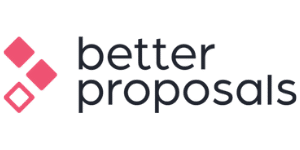
Although it sounds minimal, use of a proposal creator – like all of these tools – is all about saving time. Looking back at Michael, our workplace harassment speaker, his proposal software comes into play immediately after he’s booked a gig. If he sends a sales email on Monday, meets with that event planner on Thursday, and gets a “yes” from her on Friday, he can get a proposal to her Friday afternoon in a matter of minutes. From start to finish, it took less than a week for him to book the speaking gig. That sounds like a dream, right?
If you’re not sure which proposal software is best suited to your speaking business, we’re personally huge fans of Better Proposals. Not only do our consultants know it inside and out. It’s also affordable, easy to setup and learn, and produces beautiful results. Visit their website to learn more.
For SpeakerFlow Customers:
If you’re a SpeakerFlow customer and already paying for SpeakerFlow CRM, you also have access to an esignature app, Zoho Sign. Integrated with the CRM and available through your monthly fee to Zoho, this app allows you to send proposals and contracts, all of which will be recorded in the CRM. Visit our systems page to learn more!
eSpeakers
Another major player in the speaking industry, when it comes to sales, is eSpeakers. Started in 1999 by Art Berg, CSP, CPAE, eSpeakers serves as a speaking gig powerhouse. With built-in automations, event management features, and a database of meeting planners, each account allows you to find leads and turn them into clients, all in one platform. In short, eSpeakers is a sort of combination event management platform and CRM. Plus, like our own SpeakerFlow CRM, it was built by speakers for speakers, so it was already created with you in mind.

On top of its usefulness for speakers, eSpeakers has been of growing importance for event planners. As planners search for speakers, saving time and finding a quality speaker within their budget is of the utmost importance. That’s where eSpeakers comes in. Because you are given an eSpeakers speaker profile with your account, you’re automatically entered into the eSpeakers marketplace. This hub of thought leaders makes it easy for event planners to find you, contact you, and book you for their speaking gigs quickly and with confidence.
Pro Tip: The SpeakerFlow team is a certified partner with eSpeakers, and our CRM has a direct integration with it. So, if you’re unsure if you’re using it effectively or if you’d like to connect your CRM and eSpeakers account, feel free to give us a ring. We’ve got you covered. 😊
G Suite
While a lot of these tools may be new, this one is an oldie but a goodie: G Suite. If you haven’t heard of G Suite, you’ve likely still used one of the apps included in the G Suite package, such as Google Drive, Google Docs, or Google Calendar. Each of these apps, along with a handful of others, is combined in a single purchase for business owners. By using G Suite, you have a network of applications and tools available to you through a single login for a low monthly fee. The image to the right showcases just a few of the ways you can use G Suite applications in your day to day processes for booking speaking gigs.

Considering it solely from an organizational standpoint, G Suite is a game-changer. Besides being able to share information among your team, it also simplifies communication with decision-makers. Remember the digital collateral I outlined earlier? Once you have that information compiled, you can store it in a Google Drive folder for “Speaking Gig Materials”. You can then share the link to that folder with event planners, so they can access and download the files they need without having to contact you repeatedly prior to the event. Then, after the event is over, you can send them a Google Form to submit feedback for your performance.
As a bonus, most G Suite applications integrate with CRMs, including Hubspot, Pipedrive, and the SpeakerFlow CRM. In doing this, as you track leads and clients in your CRM, you can also share files, send emails, and save presentations from your G Suite apps without having to leave the CRM. It’s all about using technology to save time, so you can spend less time in the weeds and more time booking speaking gigs.
For SpeakerFlow Customers:
If you’re a SpeakerFlow customer, file storage is yet another area of your business that can be covered with Zoho apps, in this case Zoho Workdrive. Like Google Drive, Workdrive allows you to store and stare files through the cloud. Plus, it’s already covered through your monthly subscription to Zoho One – no extra payments needed.
Password Vault Apps
Another awesome day-to-day tool is a password vault. These apps are designed to safely and securely store login information for your digital tools. That way, you don’t have to try and remember each one when you sign in, or worse, use the same username and password for all of them. I know how easy and convenient that sounds, but take it from me – that’s definitely not secure. Looking at the sister that hacked my Facebook page…
But, anyway, if you already have a password vault in place, kudos! If you don’t, our fan favorite at SpeakerFlow is LastPass. It ticks all of our boxes for quality apps, like ease of use and desktop and mobile access. Plus, starting at only $4/month for business accounts of up to 50 users, it’s surprisingly affordable. Another stellar option, if your budget is a little bigger, is 1Password. Both apps effectively function in the same way, but at $4/month for a single user, 1Password will cost you a bit extra.
For SpeakerFlow Customers:
Once again, if you’re a SpeakerFlow customer, there’s an app for this, too! Meet Zoho Vault. Like 1Password and Last Pass, Zoho Vault is a password storage and sharing application and integrates directly with SpeakerFlow CRM. However, unlike other password apps, Vault is – surprise, surprise – included with your monthly subscription fee anyway. No added cost, no extra tools to learn. Just a similar tool in the same system you’re already using for the same price.
Speaker Intel Engine
Last but definitely not least of the technology out there for finding speaking gigs is the Speaker Intel Engine. Designed by speaker and sales expert, Sam Richter, the Intel Engine is the ultimate time-saver when it comes to finding leads for speaking gigs. To put it simply, the Intel Engine is a Google Search overlay. This means that it provides an easy way for you run complex Google searches, using Google algorithms, to find highly qualified speaking gigs. It also provides a simple way to narrow down who the decision-maker for an event may be (because no one likes having to talk to six people before finding the guy or gal in charge).
Once again, let’s jump back to our example speaker, Michael from Scranton. As Michael is looking for speaking gigs, he can use the SpeakerFlow Intel Engine to search by industry, geographic location, or company. He can also pinpoint upcoming conferences, relevant associations, or his competitors all in a few quick clicks. Although he still has to copy and paste the event and event planner details into his CRM when he’s finished, by using the Intel Engine, Michael saves countless hours compared to standard online searches for speaking gigs. Plus, his subscription to the Intel Engine includes unlimited updates. That way, Sam adds new features and improvements, Michael gets immediate access for no extra charge. Win win!
The Basics of Managing an Independent Sales Representative
At this point, all of the processes and tools we’ve talked about have focused largely on one-man (or one-woman) teams. However, what if you don’t want to manage all of these processes and tools yourself? Another option for booking speaking gigs is hiring an independent sales representative, or ISR. Sometimes called speaker agents, ISRs are focused first and foremost on booking speaking gigs for you. That said, depending on your speaking business and the ISR you hire, their responsibilities may vary. Let’s break down some basic information about hiring a sales rep and how they can positively impact your process for booking speaking gigs.
Roles & Responsibilities

As a general rule, ISRs within speaking businesses are hired primarily for sales. This may include finding speaking gigs, researching the companies hosting them, and conducting initial outreach to event planners. Depending on your schedule and his or her experience, many ISRs’ responsibilities end at the “money conversation”. This is largely because event planners will many times (a) want to meet you virtually or in-person prior to the event and (b) discuss price options with you. We mentioned before that it never hurts to try and push for a higher fee, but that goes both ways. After all, if event planners think they can book you for the gig and stay under budget, they’re definitely going to ask. Still, if you have an experienced ISR on your team, they may be able to tackle this conversation, too, so you can just keep rolling from one gig to the next.
In some speaking businesses, the ISR also functions, to a certain degree, as a sort of virtual assistant for the speaker that employs them. This can include social media posting on behalf of the speaker and arrangement of travel details as they book speaking gigs for you. In cases like this, rather than a sales rep, these team members are generally described as “business managers” and compensated accordingly for that extra work. Not sure what reasonable compensation is, for salespeople or for business managers? We’ll go over that next.
Average Salary & Commission
Now, we’ve talked about what ISRs do and why you would potentially hire one, but how much does it cost to do so? For the most part, the payment structure for ISRs is similar to most sales positions, regardless of industry, in that it includes a base salary and commission from sales made. Within the speaking industry specifically, the base salary for a sales person is half of your standard speaking fee every month. For example, if your keynote fee is $7500, your ISR’s base salary should be around $3750 per month. This payment structure assumes that they will close multiple speaking gigs for you each month and, in doing so, raise the potential for a higher speaking fee in the future.
Speaking of booking speaking gigs, on top of their base salary, your ISR should also receive a commission from each sale that they make. On average, speaker ISRs are afforded anywhere from 10-15% commission from their sales, incentivising them to make as many as possible. For further motivation, many speakers also offer bonuses to their ISRs when they hit a revenue goal or when a prestigious or profitable gig is booked. The way we see it, no one really loves conducting sales, so when someone is taking care of sales for you, a little extra cash is an easy way to say, “Thanks!”
The Hiring Process
If an ISR sounds like a team member you need, the process for hiring one includes a few stages. First, evaluate your speaking businesses needs and write your job description. Are you losing speaking gigs because of time? Do you need help managing social media on top of sales? These questions are two of many you should ask to narrow down what qualities and credentials you’re looking for in an ISR.
Second, outline the payment structure for your prospective ISR for the job description, and, third, reach out to your speaker network for recommendations. From tips for finding an ISR to advice about managing one, other speakers in your circle can be invaluable. Many are also more than willing to help you craft your job description, so you limit the number of applicants to a qualified few.
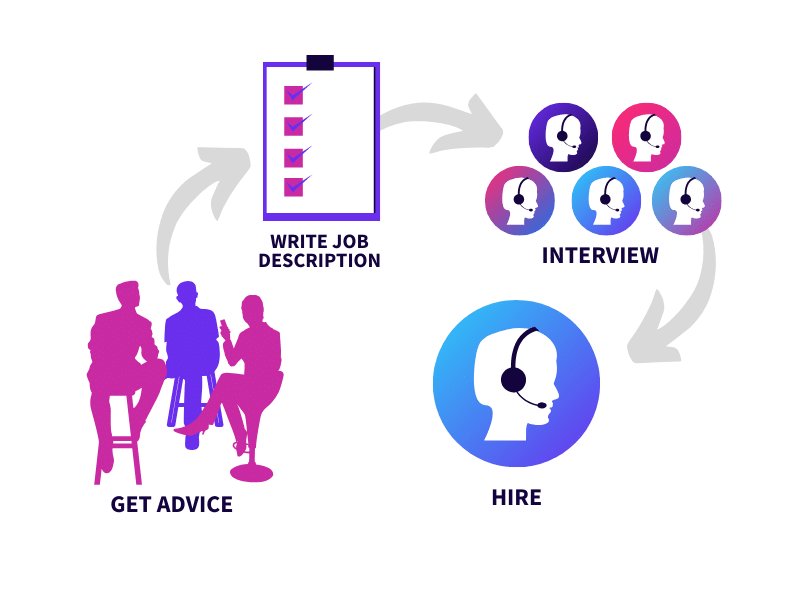
Fourth, interview, interview, interview. Get to know your applicants personally and professionally, and determine if they are going to be a good fit. You’re going to be working closely with them, so you should trust them enough for business and like them enough to spend time with them almost daily.
Finally, don’t skimp on training the ISR you hire. Outline the industry(ies) on which you focus, highlight your best clients, and detail any partnerships you have. Regardless of who you hire, your new ISR needs to know the A-Z of selling for you, as a speaker and as an individual. Remember that even if they are experienced in booking speaking gigs, they’re new to your business, so it can take some time for them to adjust. Before training begins, document your processes thoroughly, and update it as you go. That way, they’ll have additional guidance as they’re getting started and you’re prepared if, for whatever reason, they don’t work out.
Pro Tip: For more information about hiring an ISR for your speaking business, the “The Wealthy Speaker 2.0” book by speaker and coach Jane Atkinson has some great tips and tricks. It’s also an all-around timeless source of speaking advice.
Technology for Managing an Independent Sales Representative
Once you’ve hired an ISR, you’ll need to integrate them with all of the tools and software you used when you were booking your own speaking gigs. There are also a handful of systems that can provide added efficiency, now that your team has grown. Depending on the size of your speaking business, you may or may not need all of the apps below. However, as you bring on additional members to take more and more off your plate, you can always integrate additional tech, too.
Project Management Systems
First and foremost, a project management system can be a life-saver when you are managing your own projects as well as those of your staff. Unsurprisingly, a project management system is designed for keeping track of ongoing projects. Like a CRM, it’s designed for maximum efficiency and organization. Whether you’re flying solo or keeping tabs on an ISR, a project manager lets you designate tasks to different teammates and projects.

A few of the most commonly-used project management systems out there include Basecamp and Trello, although there are a ton of options. In our guide to project management for professional speakers, we break down five of them, including our team favorite, Asana. That said, regardless of the one you choose, a project manager is one of the key tools to a successful speaking business, right after a CRM. Check out our blog, “Building a Speaking Business? 7 Systems You Absolutely Need,” for the full list.
For SpeakerFlow Customers:
Surprise! This is yet another app covered by the Zoho One ecosystem, the foundation of the SpeakerFlow operating system. If you’re a SpeakerFlow customer, Zoho Projects provides all of the functionality mentioned above, included in your monthly subscription. As you’d expect, it also integrates with your CRM and allows you to manage all of your growth, customer experience, and administrative projects from one easy-to-manage app. Read about it on our systems page or contact us directly to have it set up.
Team Communication
The next tool that comes in handy once you have a team beneath you is a team communication app. Like Facebook Messenger or the instant message platforms of times gone by, these apps allow for instant communication with teammates. They’re great for day-to-day communication, so you don’t have to send a thousand emails to your ISR or virtual assistant. Furthermore, many team communication apps also allow you to add single channel guests. This means if you consistently speak for an organization every month and want their event planner to be able to communicate with you team, you can add them, too.

Our favorite team communication app – and the one we hear recommended over and over – is Slack. Along with its colorful interface (because work should be fun, too), it also integrates with the other tools in your toolbelt. These include most common CRMs, project management systems, and G Suite, among others. Above all, Slack starts out completely free, so if it’s just you and an ISR, you’re not breaking the bank.
eSpeakers
Working with an ISR also puts a different spin on owning an eSpeakers account. Previously, we walked through how eSpeakers can be useful in a speaking business – period. But how can you maximize it when you’re no longer on your own?
The biggest difference when using eSpeakers with an ISR comes in designating who works in which systems. As a speaker, when you hire a sales rep, your main goal is to limit the amount of time you spend selling, so you can focus on preparing for upcoming speaking gigs. In light of this, many speaking businesses integrate their CRM with their eSpeakers account. That way, their ISR can work within the CRM and keep booking gigs, and they, the speaker, can just focus on their eSpeakers calendar as it fills up.
Currently, eSpeakers integrates with a handful of popular CRMs, including Infusionsoft, Insightly, Salesforce, and Hubspot. Stay tuned as we wrap up the integration between eSpeakers and SpeakerFlow CRM! 🎉
Speaker Intel Engine
In the last section, we also took a quick look at the Speaker Intel Engine and how it can speed up the search for speaking gigs. In the same way that it aids you, as a solopreneur, the Intel Engine is also a dynamic tool in the hands of an ISR. Plain and simple.
Sales Metrics to Track
Finally, what good is selling if you can’t tell if you’re doing it right? Tracking sales metrics for your speaking business is just as important as in any other industry. Besides setting goals for yourself or your team, tweaking your sales process ensures you keep growing. Additionally, more data means more evidence for which tools in your speaking business are worth the investment.
At a minimum, as a speaker, you should be tracking the number of speaking gigs you win and lose on a monthly, quarterly, and yearly basis. You also want to track the total number of speaking gigs you attempted to book and the industry corresponding to each event. This data alone, although simple, tells you in which industries you are succeeding (so you can broaden your influence in those areas) and what your overall success rate is. You can also see who your top referrers are, giving you a clear indication of how much you can rely on referrals for revenue. Knowing these things, you can adjust your sales process as needed and steadily improve.
On a higher level, Google Analytics is an outstanding tool to track sales metrics, among other things. Worried that you don’t have as many leads coming to your website? Not sure where your leads are finding out about you? Google Analytics provides this information in a simple dashboard along with graphics for a quick visual of your speaking business’s growth. You can also use the information from Google Analytics with the information in your CRM. Combined with the basic data above, you can find out how many calls you need to make or emails you need to send to make a sale.
Pro Tip: On average, a speaking business need to make 150 dials in order to have 15 conversations with event planners. Of those 15 conversations, only 3 will be a good fit and only one will turn into a sale. Keeping track of data like this helps you set goals for you and your ISR, both in terms of revenue and number of calls made over time.
Additional Options for Finding Speaking Gigs
Besides conducting your own outbound sales, there are a handful of additional ways to reel in speaking gigs. These options can be your main sources of gigs in the future but, for the most part, they should be supplementary. Especially if you’re a rookie speaker, many of these options should take a back burner compared to stabilizing your own sales process.
Speakers Bureaus
The most common place that speakers look to when they want more speaking gigs is speaking bureaus. Without question, bureaus can be a great source of referrals, especially if you are a well-established speaker and an expert in your industry. Premiere Speakers Bureau, for example, boasts names like Richard Branson and Mel Robbins in their roster. For these speakers, they are established enough that their speaking fees are doubtless five-figures on average. This is especially important because speakers bureaus operate in the same way that ISRs do, but on a larger scale. In short, bureau reps are given commission based off their sales. As a result, in many cases, this leads to greater promotion of expensive speakers, simply for the fact that a sale for one of them means more commission.
This leads me to a key point, regarding speakers bureaus: Don’t chase them. Attract them. The more you focus on building a firm foundation for your speaking business, the more three things will happen. First, your sales skills and those of your ISR will improve (surprise, surprise). Second, you’ll book more speaking gigs and more high-end clients. Third, as a result, you’ll be able to charge more for speaking gigs. Combined, these three things will bring bureau representatives to your door, motivated to sell your services to event planners.
Personal Referrals
Another option for increased numbers of speaking gigs comes in the form of personal referrals. As with speakers bureaus, these should not be your primary source of gigs if you are a rookie speaker, but can undoubtedly become so once you are established. To increase the number of referrals, first, track the referral source for each speaking gig you win, as mentioned earlier. This allows you to see who is already referring you so you can offer them incentive to continue doing so. For example, if Dunder Mifflin paper company has referred you five gigs in the past year, you could offer their employees free copies of your book, as a thank you.
The other way to bring more referrals your way is simply by asking. After an event has concluded, contact the event planner and let them know they’re free to share your information or hire you again. It seems common sense, but so many speakers miss this opportunity! By adding it into your sales workflow, you can make it a standard process.
Speakers Associations
The last of the common ways to bring in more speaking gigs is through speakers associations. In North America, the two largest speakers associations are the National Association of Professional Speakers (NSA) and the Canadian Association of Professional Speakers (CAPS). Associations like these can be exceptional ways to learn from fellow speakers and make connections that could eventually turn into referrals. Like speakers bureaus, they’re also attractive places for event planners to look for speakers. However, unlike speakers bureaus or personal referrals, speakers associations are unlikely to ever produce the majority of the speaking gigs sent your way. This is largely because speakers associations are designed for connections and education for speakers, making it more about speakers and less about event planners.
All in all, speaking businesses cannot function without outbound sales efforts. From phone calls to letters to emails, reaching event planners and getting them to choose you for their speaking gigs can be a complex and tedious process. Hopefully, this provided from clarity surrounding speaker sales efforts and some tips and tricks to give your sales a boost.


